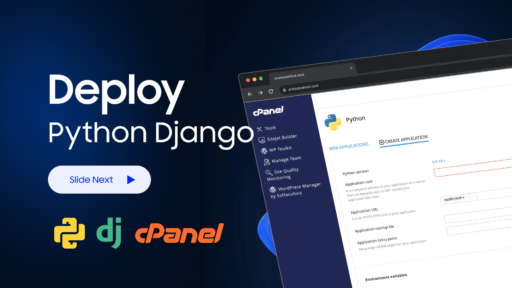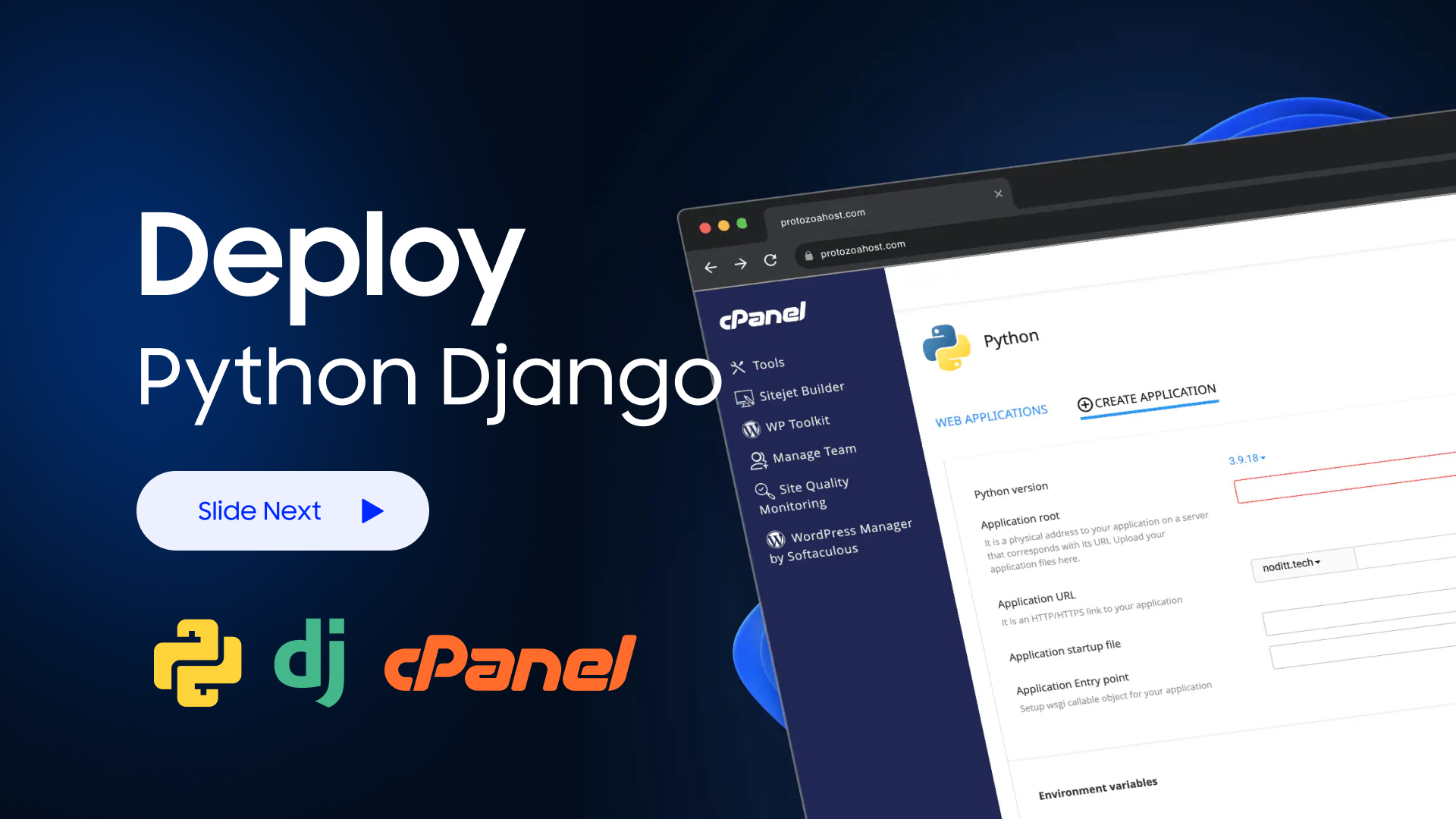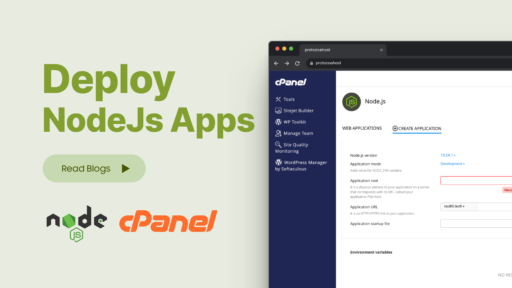Welcome to Protozoa Host’s “Deploy Django Projects on cPanel: The Ultimate Python Hosting Guide”. If you’re creating websites with Django, which is a tool for making websites with Python, and you want the world to see your work, you’re in the right place. Here at Protozoa Host, we’ll guide you on how to use cPanel, a handy tool for managing websites, to make your Django projects live and accessible to everyone.
This guide is made to be simple and easy to understand, perfect for anyone who’s new to Django, cPanel, or both. We’ll walk you through the steps to move your project from your computer to the web with Protozoa Host. From choosing the right hosting plan with us to setting up your project in cPanel, we’re here to help you every step of the way.
By the end of this guide, you’ll find that getting your Django project up and running on the web with cPanel is not just doable, but also easy and straightforward with Protozoa Host’s support. Let’s dive in and take your Django project to the next level, making it available for the world to see.
Getting Started: Django Deployment and Python Hosting on cPanel
Before you can begin the process of deploying your Django project, the first step is to log into your cPanel account. If you’re hosting with Protozoa Host, you’ll find the login details for your cPanel account in the welcome email we sent you when you signed up. If you can’t find this information, feel free to reach out to our support team for assistance.
Step 1: Log in to Your cPanel Account – Python Hosting
- Navigate to the cPanel login page: You can usually access this by adding /cpanel at the end of your website’s URL (for example, http://yourwebsite.com/cpanel) or by entering the direct link provided in your welcome email.
- Enter your username and password: These were provided to you by Protozoa Host when you first signed up. If you’ve changed your password and can’t remember it, use the “Forgot Password” link to reset it.
- Click the ‘Log In’ button: Once you’ve entered your credentials, press the ‘Log In’ button to access your cPanel dashboard. Here, you’ll find all the tools you need to manage your website and prepare for your Django project deployment.
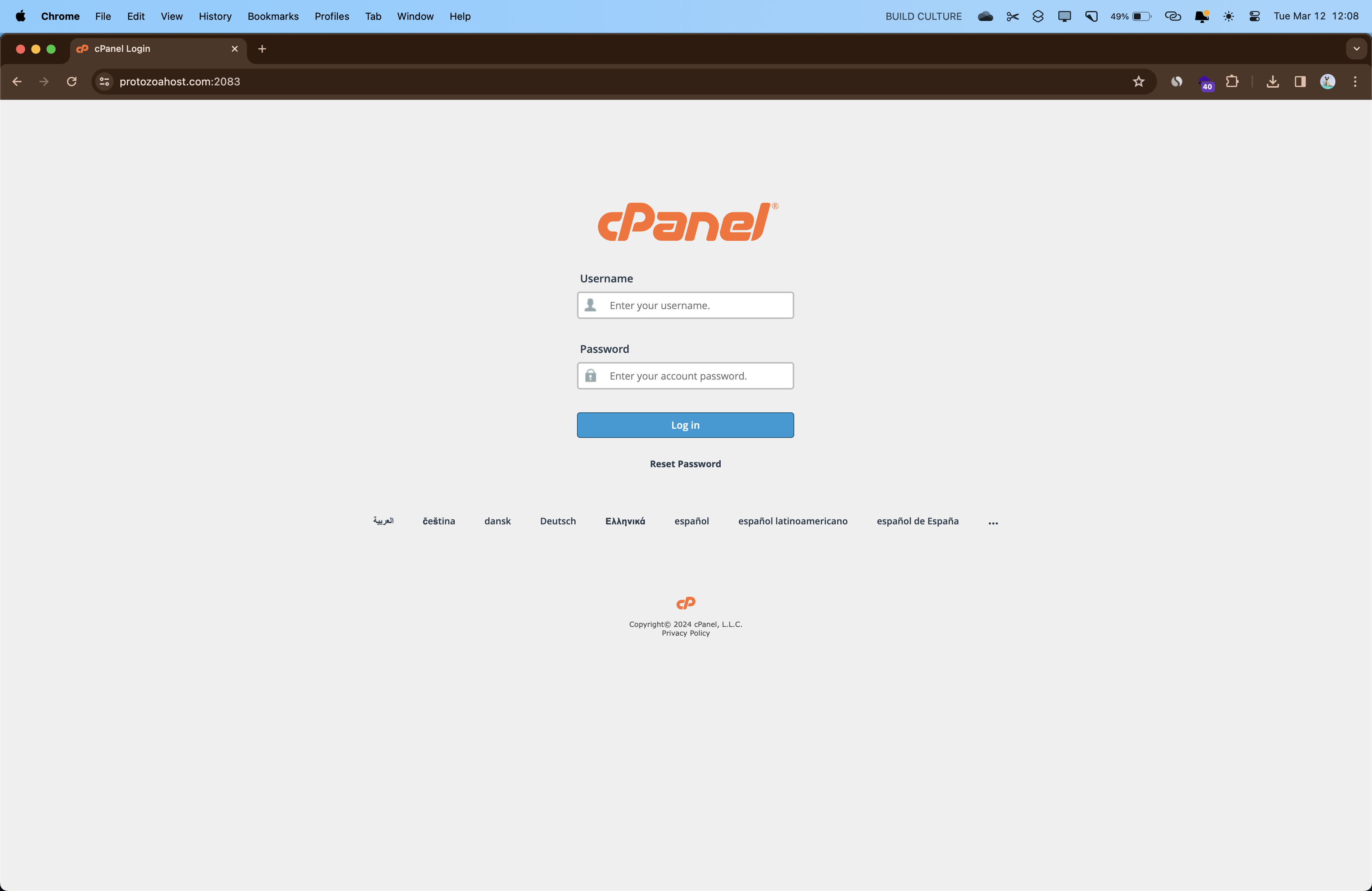
Remember, your cPanel dashboard is the control center for your hosting account, offering access to file management, databases, email accounts, and more. Familiarize yourself with the layout and tools available to you, as they will be instrumental in the deployment process.
Step 2: Locate the Python Selector in cPanel – Python Hosting
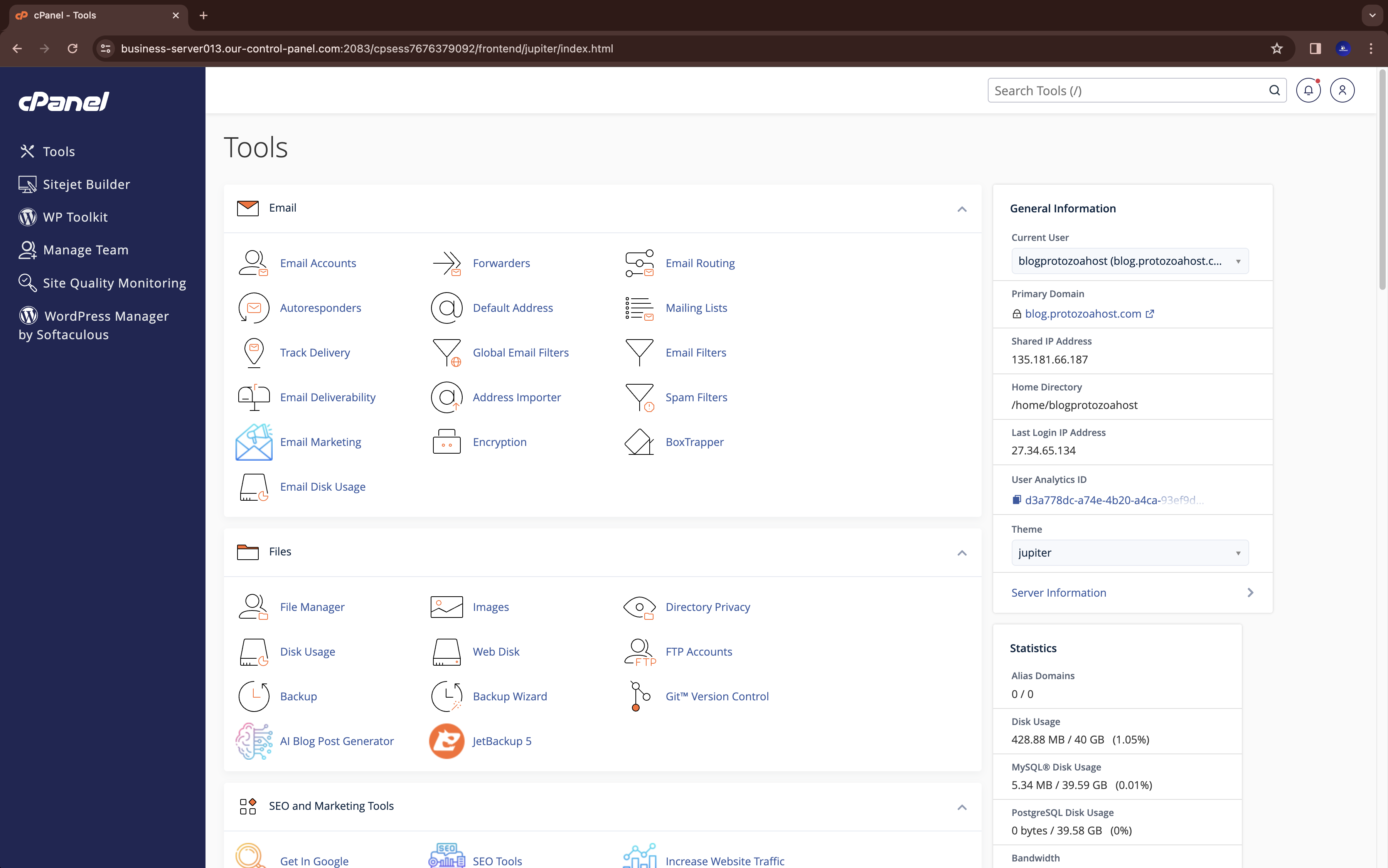
Once you’re logged into your cPanel account, the next step is to find the Python application manager, often referred to as the “Python Selector”. This tool allows you to manage Python applications and environments directly from cPanel, making it essential for deploying your Django project.
- Go to the Software Section: Scroll through your cPanel dashboard until you find the “Software” section. This is where cPanel groups tools related to software installations and configurations, including the Python Selector.
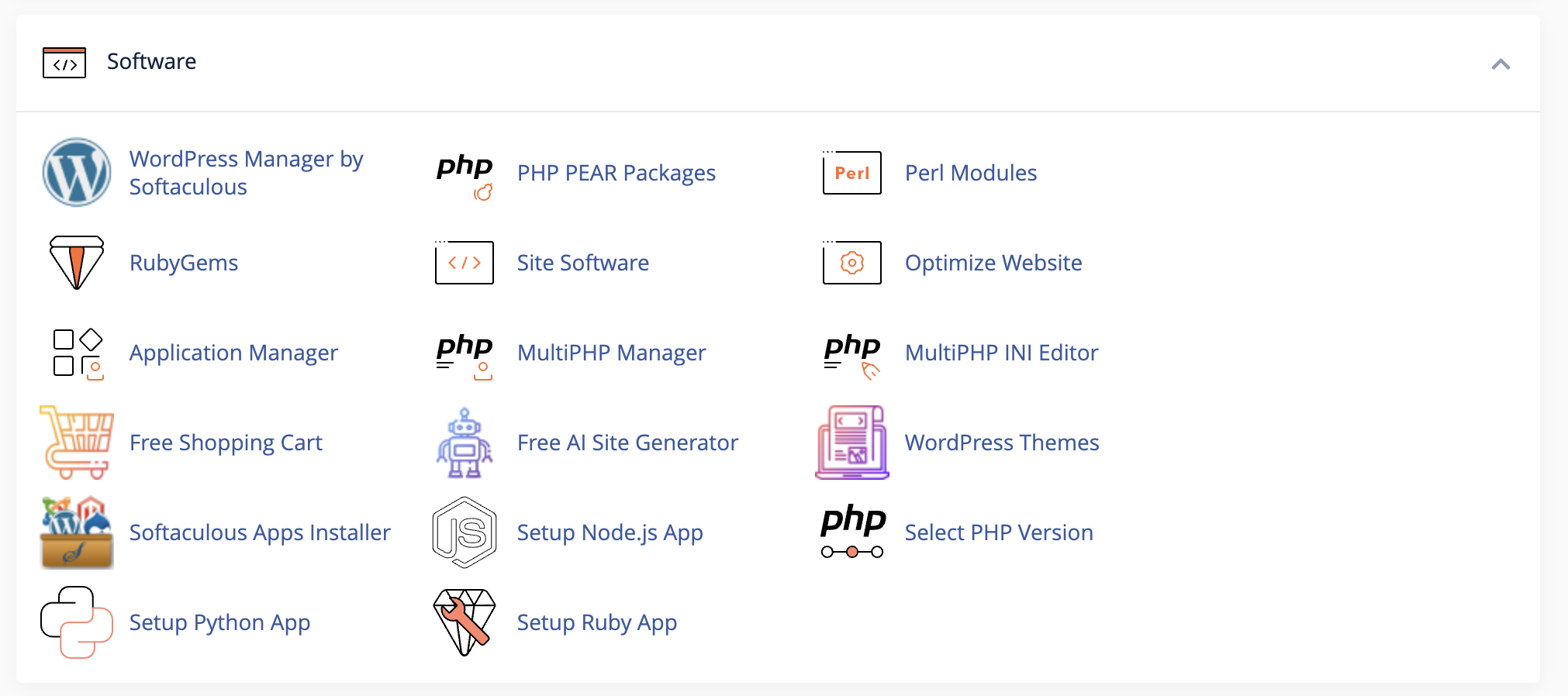
Software Tab- Python Hosting - Click on the Python Selector: Look for an icon or link labeled “Setup Python App”, “Select Python Version”, or simply “Python Selector”. The exact naming can vary depending on your hosting provider and the version of cPanel they are using. Clicking on this link will take you to the Python application management interface.

Python Selector – Python Hosting - Familiarize Yourself with the Python Selector: Once you’re in the Python Selector interface, take a moment to familiarize yourself with its layout and features. Here, you can create new Python environments, manage existing ones, and set up various Python applications, including Django.
Finding the Python Selector is a crucial step in preparing your cPanel account for Django deployment. It’s the gateway to setting up the right environment for your project, ensuring that all the necessary dependencies and versions are in place for a successful launch.
Step 3: Create a New Python Application in cPanel
Now that you’ve located the Python Selector in your cPanel, it’s time to create a new Python application:
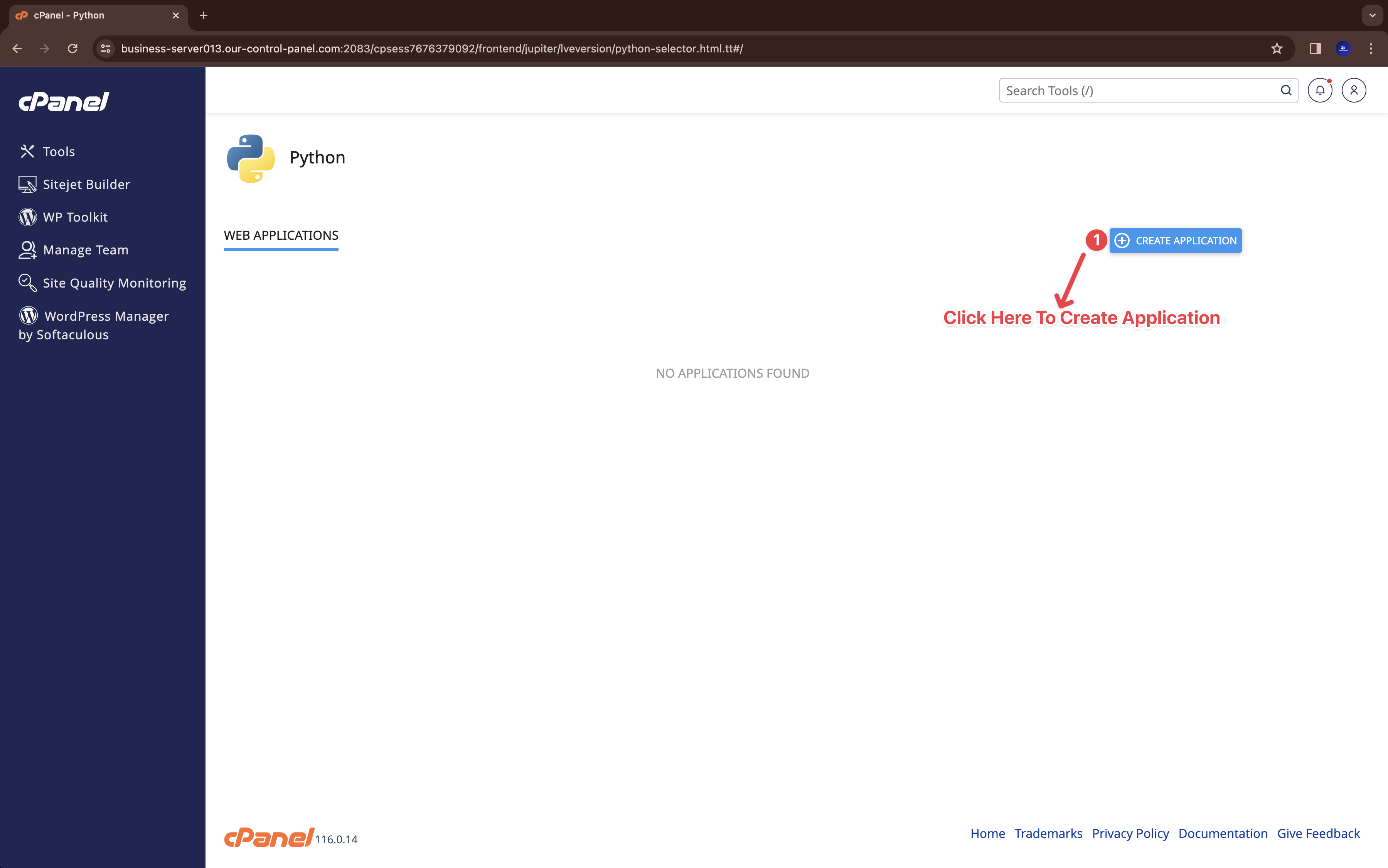
Click on the ‘Create Application’ Button: In the Python Selector interface, you will see a button labeled ‘Create Application’. It’s typically prominent, often located towards the top right of the section. Click this button to begin setting up your new Python environment.
Step 4: Selecting the Correct Python Version for Python Hosting
For successful Python hosting, it’s crucial to select the appropriate Python version that is compatible with your Django application. The Python Selector in cPanel offers a range of versions, and choosing the right one is a key step in the deployment process.

- Open the Python Version Dropdown: In the Python application setup interface, click on the dropdown menu that shows the Python version. This will display a list of available Python versions supported by your cPanel Python hosting environment.
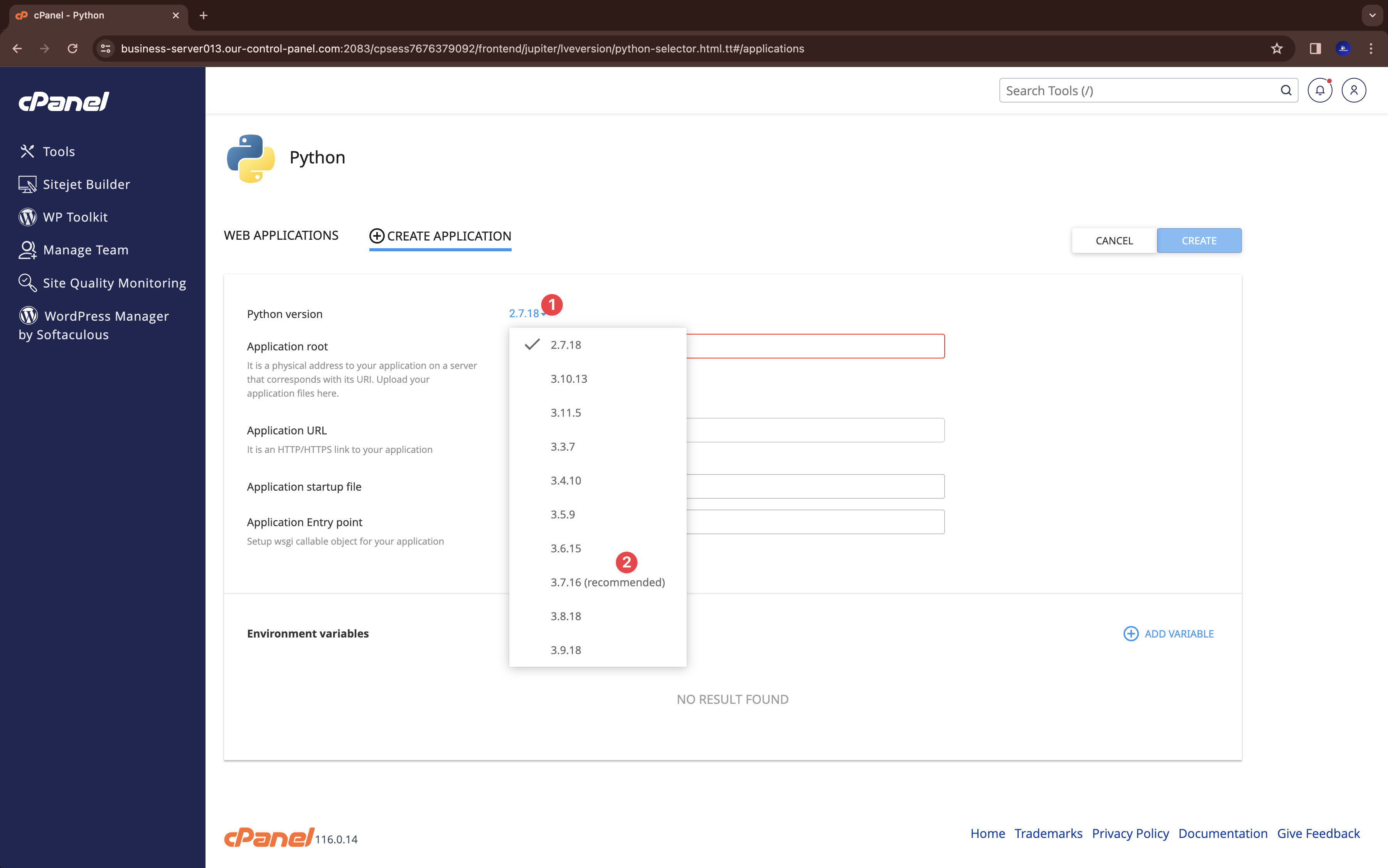
Select Python Version – Python Hosting - Choose the Python Version for Your Django Project: Django applications typically specify the Python version they are compatible with. Select the version that matches your project’s requirements. For modern Django applications, Python 3.7 or newer is often recommended, so choose a version like 3.7.16 (or the version recommended by your application) for optimal Python hosting performance.
- Confirm the Python Version for Your Hosting: Once you’ve selected the correct version, it will be set for your Python application. This ensures that your Python hosting environment is perfectly tailored to your Django project, leading to a more stable and secure deployment.
- Apply the Python Version to Your Hosting Setup: After selecting the version, the cPanel Python Selector will update the application’s environment. This process tailors the Python hosting environment, making sure it’s ready for your Django project.
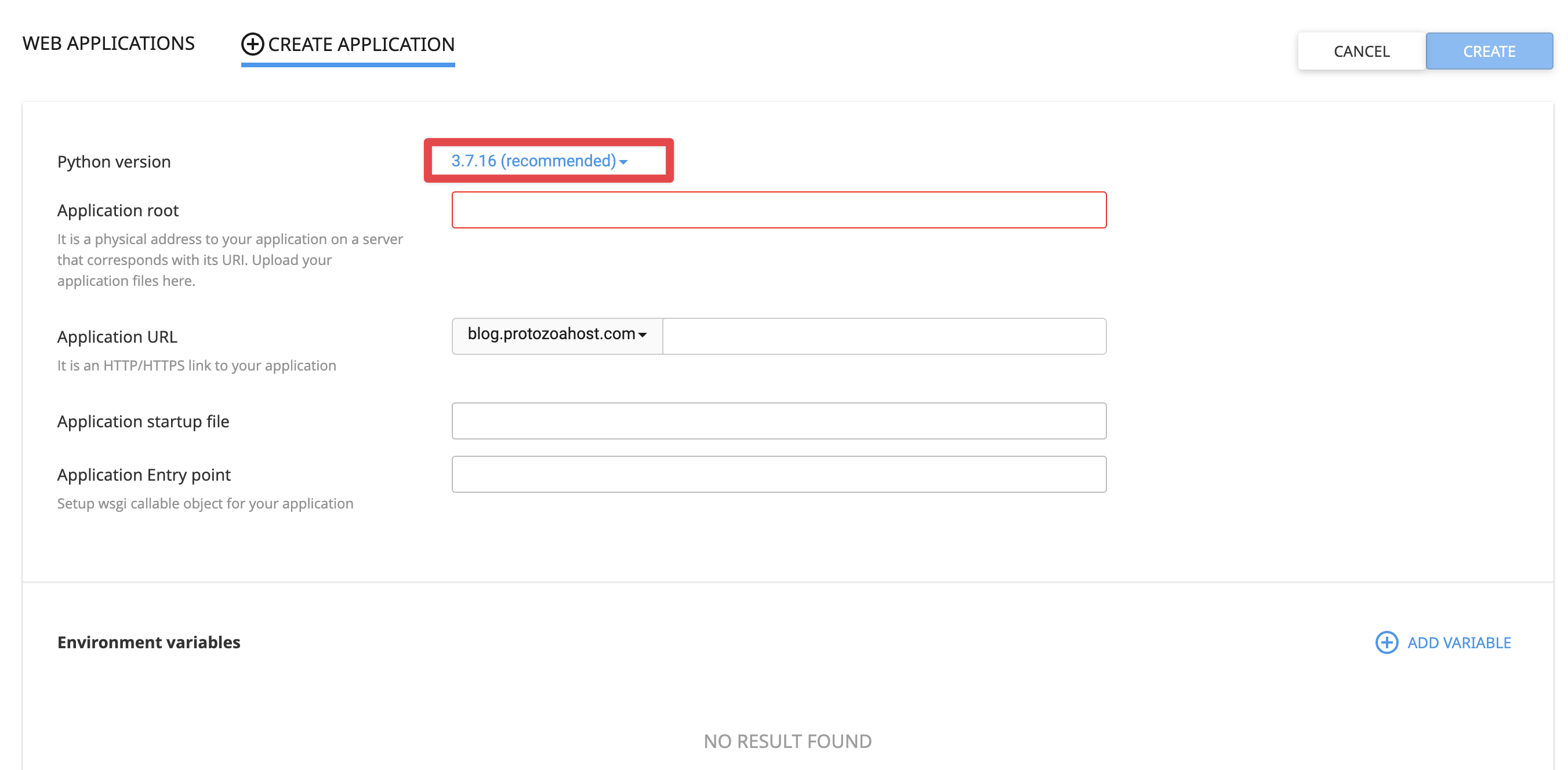
Python Version Selected – Python Hosting
Remember, the Python version you choose will affect the compatibility of the libraries and frameworks you plan to use. Ensuring that the Python hosting environment matches the requirements of your Django project is essential for a seamless deployment on cPanel.


